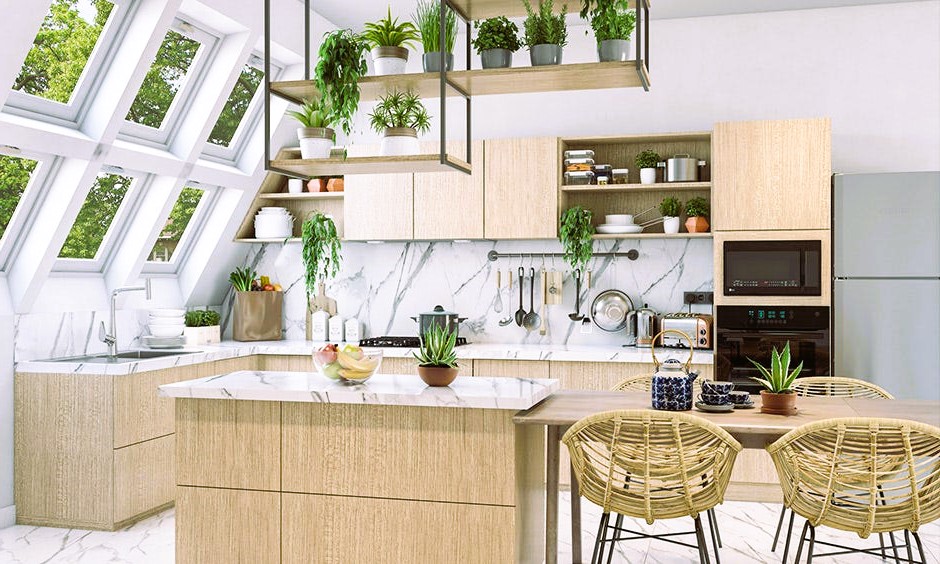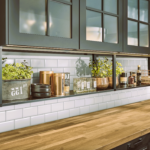Sustainable Kitchen Design: Environmentally Friendly Choices for a Greener Home
In an era where environmental consciousness is paramount, the concept of sustainable living extends to every aspect of our homes, including the kitchen. Sustainable kitchen design embraces eco-friendly materials, energy-efficient appliances, and thoughtful layouts to minimize the environmental impact of our culinary spaces. Let’s explore the principles of sustainable kitchen design and discover how environmentally friendly choices can contribute to a greener home.
1. Eco-Friendly Materials: Choosing the Right Foundations
Wood from Sustainable Sources: Choosing wood from responsibly managed forests or those certified by organizations like the Forest Stewardship Council (FSC) ensures that the material is harvested sustainably. Look for cabinetry, countertops, and flooring options crafted from certified wood to support forest conservation.
Recycled and Recyclable Materials: Opt for materials made from recycled content, such as recycled glass countertops or tiles. Additionally, prioritize materials that are recyclable at the end of their lifecycle to minimize waste.
Bamboo and Cork: Bamboo and cork are rapidly renewable resources that make excellent alternatives to traditional hardwood. These materials grow quickly, allowing for sustainable harvesting practices without depleting the resource.
2. Energy-Efficient Appliances: Minimizing Energy Consumption
ENERGY STAR Certified Appliances: When selecting kitchen appliances, prioritize those with the ENERGY STAR label. ENERGY STAR appliances meet strict energy efficiency guidelines set by the U.S. Environmental Protection Agency (EPA) and the U.S. Department of Energy, reducing both energy consumption and utility costs.
Induction Cooktops: Induction cooktops are more energy-efficient than traditional gas or electric cooktops. They heat cookware directly, minimizing heat loss and speeding up cooking times. Additionally, induction cooktops are safer and easier to clean.
Smart Appliances: Investing in smart appliances with advanced energy-saving features can further enhance the sustainability of your kitchen. These appliances often include energy monitoring, adaptive cooking, and remote control capabilities, allowing for optimized energy usage.
3. Water Conservation: Implementing Efficient Water Practices
Low-Flow Faucets: Install low-flow faucets to reduce water consumption in the kitchen. These faucets maintain adequate water pressure while minimizing water waste, contributing to water conservation efforts.
Water-Efficient Dishwashers: Choose a dishwasher with a high ENERGY STAR and WaterSense rating. Water-efficient dishwashers use less water per cycle, saving both water and energy. Additionally, consider running the dishwasher with full loads to maximize efficiency.
4. Waste Reduction: Minimizing Environmental Footprint

Composting Systems: Integrate a composting system into your kitchen design to divert organic waste from landfills. Composting enriches soil and reduces the production of methane, a potent greenhouse gas emitted from decomposing organic matter in landfills. Handmade elements in modern kitchen design, more details in our article.
Recycling Stations: Designate specific areas for recycling bins to encourage proper waste separation. Recycling materials like glass, paper, plastic, and metal helps reduce the demand for raw materials and conserves energy compared to producing new products.
5. Efficient Lighting: Illuminating Responsibly
LED Lighting: Opt for LED lighting fixtures, which are energy-efficient and long-lasting. LEDs consume less energy than traditional incandescent bulbs and contribute to a reduction in greenhouse gas emissions.
Natural Lighting: Maximize natural lighting to reduce the need for artificial illumination during the day. Consider incorporating larger windows, skylights, or light tubes to harness natural sunlight and create a more inviting and energy-efficient kitchen space.
6. Sustainable Kitchen Layouts: Thoughtful Design Choices
Open Concept Designs: Open concept kitchens promote better airflow and natural light distribution, reducing the need for artificial heating and lighting. They also enhance social interactions, fostering a sense of community within the home.
Compact Designs: Efficiently organize your kitchen layout to minimize wasted space. Compact designs ensure that the kitchen footprint aligns with actual needs, reducing material consumption during construction and decreasing energy use for heating and cooling.
Conclusion: Nurturing a Green Culinary Haven
Sustainable kitchen design goes beyond aesthetics; it’s a commitment to responsible choices that benefit both the environment and the well-being of homeowners. By selecting eco-friendly materials, energy-efficient appliances, and implementing thoughtful design practices, you can contribute to a greener home.
For more information on sustainable living and kitchen design standards, explore resources on Canada.ca. These platforms offer valuable insights into sustainable practices, ensuring that your kitchen design aligns with the highest benchmarks of environmental responsibility. As we continue to prioritize sustainability, our kitchens can become vibrant hubs that not only nourish our bodies but also nurture the planet we call home.





